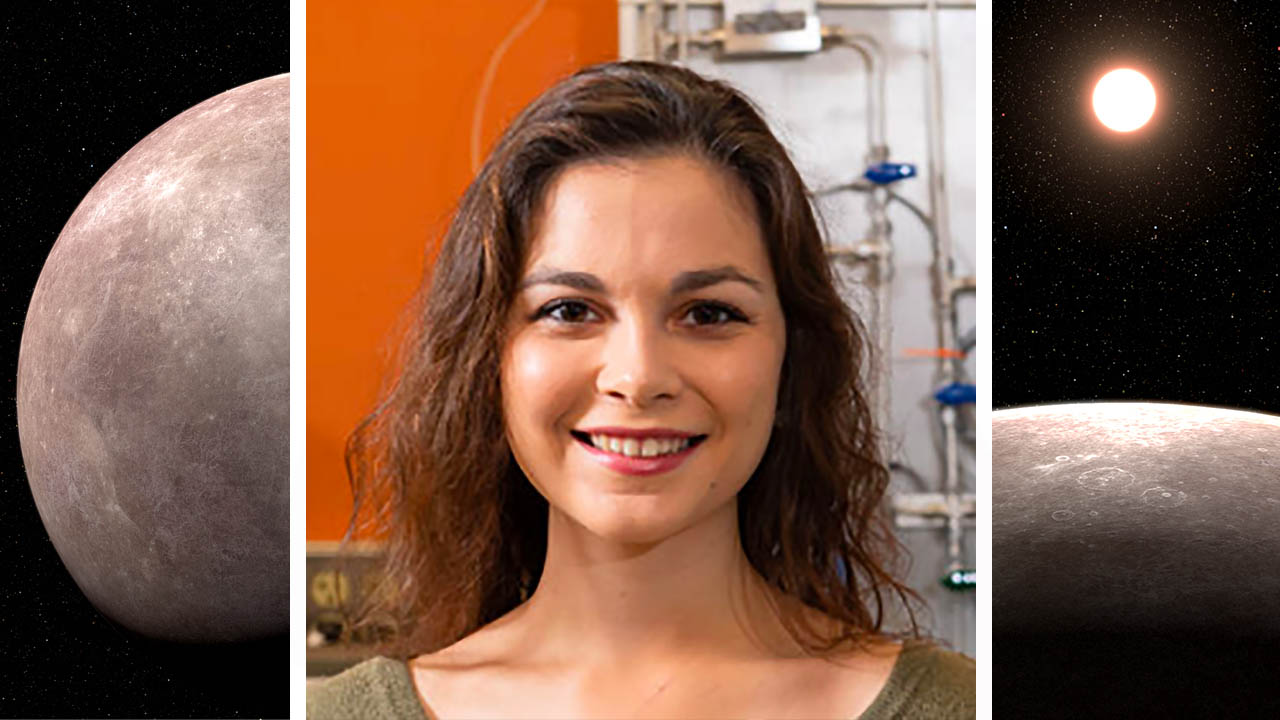
Sarah E. Moran - kosmomagazine.it
We metSarah E. Moran, Postdoctoral Planetary Scientist with the Lunar and Planetary Laboratory of the University of Arizona in Tucson, Arizona (USA). Moran studies exoplanets (the planets that orbit around other stars) and worlds of the outer Solar System. Through laboratory experiments and computer models, she investigates clouds and mists in planetary atmospheres.
She’s a part of scientists team that studied exoplanet LHS 475 b. This is a planet discovered by NASA’s TESS Space Telescope and then confirmed by James Webb Space Telescope. LHS 475 b is located about 41 light-years away from Earth. A light-year is equivalent to about 9.46 trillion kilometers (5.88 trillion miles). It has the same sizes of the Earth and it is also rocky.
How was your passion for exoplanets born? What emotions do you feel in studying worlds invisible to eyes and almost invisible to telescopes?
In my undergraduate research, I did two projects: one studying the distant, early universe through quasars and the other studying quantum physical behavior of materials for use in solar cells. Both of these projects felt esoteric and unsatisfying to me and didn’t fully capture my imagination or my passion. When I applied to graduate school, I found myself drawn to planets that were being discovered in ever greater numbers by the Kepler mission – these objects were places I could conceptualize, but which were still wholly alien and strange compared to Earth. Each new planet felt like a new character to me, one whose backstory, history, and future I could meet and get to know. I’m constantly excited and in awe of all the exotic kinds of places that the universe makes, and I feel very privileged to get to study them. A lot of imagination is involved in thinking about these tiny points of light as worlds in their own right, and I really enjoy thinking about what they might be like.

Credits: NASA, ESA, CSA, L. Hustak (STScI)
How can you study the clouds and mists of planet so distant? Why is it so important to study exoplanets’ clouds?
Clouds, mists, and hazes of distant planets look like muted signals in our telescopes because they block extra light compared to what we expect from the planet’s atmosphere. Just like on Earth where a cloudy day is dimmer than a sunny day, the light we measure from cloudy planets is dimmer than we expect. However, because we can measure the exact wavelengths – or colors – of light, we can infer the compositions of these clouds and hazes as well as their location in the atmosphere, given enough observations. Knowing the kinds of clouds that exist on these planets and where they are in the atmosphere tells us more about the chemical makeup of the planet and how it formed. The clouds can also tell us things about the wind speeds on the planet and whether the climate might ultimately be hospitable – or not – for life.
What are the exoplanets on which there could be life?
There are hundreds of planets that lie in the “habitable zone” – the place around the star where liquid water would be stable if the planet had an Earth-like atmosphere. However, we have yet to find strong evidence that any of these planets indeed have an atmosphere necessary to make any liquid water stable on their surfaces. That’s part of what JWST is trying to find out!
James Webb Telescope found a very interesting exoplanet, called LHS 475 b. How could you find it?
We knew LHS 475 b might be there from observations by NASA’s Transiting Exoplanet Survey Satellite (also called TESS). TESS measured periodic dips in starlight that suggested a planet might be there blocking the light every time it made an orbit around the star. We used JWST to watch the star and also measured those tell-tale dips in light, confirming the signal from TESS was real. We also used JWST to measure how those dips in starlight changed with wavelength (color), to try and determine if the planet had an atmosphere and if so, what it is made of.
Credits: NASA/JPL-Caltech
What are the most important characteristics of LHS 475 b? Does it also have an atmosphere?
LHS 475 b is special because it’s almost exactly the same size as Earth, but much hotter (it’s 315 °C compared to Earth’s average 15 °C). That makes it an interesting planet to study to see the ways it’s both similar to and totally different from Earth. From our current observations of LHS 475 b, we are not sure if it has an atmosphere or not. We know it doesn’t have an atmosphere like Earth’s, but it might have a thick atmosphere made of carbon dioxide like Venus, or a very thin carbon dioxide atmosphere like Mars. On the other hand, it also might have no atmosphere at all like Mercury! Right now, all those options fit the data, so we’re going to do follow-up observations to try and find out which of these options actually fit the planet.
It’s very exciting thinking that the being humans, that live in a little planet called Earth, can find and study very distant planets. Does your job make you feel alone in the Universe? Or does it make you realize how fragile the Earth is?
On the contrary, my job doesn’t make me feel alone in the Universe at all. One reason is that there are just so many planets out there that I can’t imagine one of them doesn’t have some kind of life, even if we never find it. Knowing there’s someone else out there looking up just like me makes me feel incredibly connected to the Universe as a whole. Another reason is that everyday I get to work with a fantastic group of other scientists thinking about these same kinds of questions, and our team is so positive and excited that it’s infectious, which makes me feel connected to my colleagues all around the world.
I do often think about how fragile Earth is – despite all the thousands of other planets, Earth is our only home – the only place we know for sure that has oceans and air we can breathe, and an incredibly diverse biosphere. Thinking about just how extreme other planets are makes me very grateful to live on this one and very dedicated to taking care of it.



